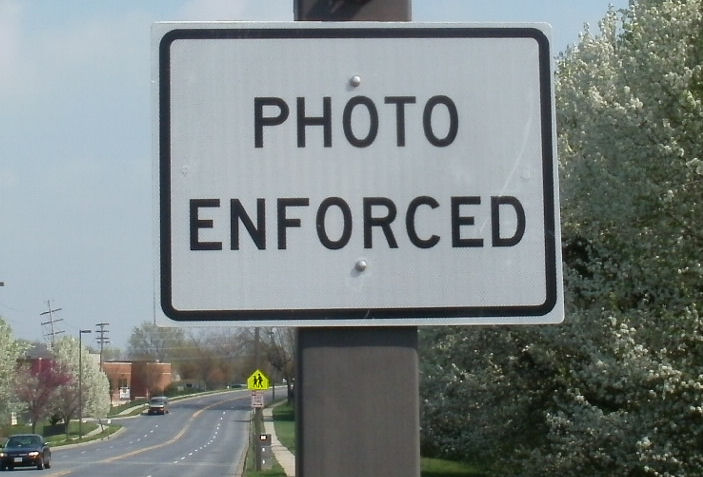
By Logan Samuels
Hood College students joined members of the Frederick community to re-create the March on Washington locally on Friday.
It has been fifty years since the Civil Rights Act was passed. In order to celebrate, Dean Olivia White began the long task of making her own version of the march that would incorporate both students here and the Frederick community.
On Sept. 26, students slowly trickled into the parking lot of Harry Grove Stadium to grab their pins and choose their signs to march with. Cars and buses dropped off dozens upon dozens of people until there was nothing but a sea of t-shirts, jackets, signs and banners commemorating the Civil Rights Act.
Hood students and Frederick citizens were all buzzing with excitement as they waited for the march to officially start. Ilana Adler, a senior here at Hood and one of the hard workers who helped prepare for the march, shared that around 1,300 people were registered including high schools, Frederick Community College and several clubs, fraternities and sororities.
Hood College had a variety of different representatives from its many sports, clubs and activities.
Ray Rivera, the student life chair of the Student Government Association and the president of La Comunidad said, “It’s important to march because the reenactment brings awareness to modern civil rights issues.”
“It connects Hood with the community and builds support,” said Kielee Jennings, a soccer player and member of Sisters Aspiring to Success.
Finally, at 9:30 a.m., a hush fell over the now enormous crowd and several speakers took the podium and spoke inspirational words to raise everyone’s spirit and get them excited for the march. Signs and banners at the ready, the crowd began to march forward following behind a large banner that pledged to uphold the civil rights of other Hood students held by SGA President Tim Hulyk and the president of the Queer Student Union, Justin Fox.
The march would continue through several locations in downtown Frederick before finishing up in front of Alumnae Hall to hear the keynote speaker, Julian Bond.
Something very unique to the Frederick march was the mobile application, Monumental, that was created by Dr. David Gurzick, Ashley Birdsell ’12, and Meg DePanise ’14. Dr. Gurzick explained, “The website gets information about your current location and then…allow[s] users to learn about them and add their own ideas for how the themes…are important to the values and challenges of the community today.”
Monumental, the mobile application, brought marchers a very modern perspective while they tried to re-create the past. The application included information about places that would be passed on the march like Baker Park, The Free Colored Library and the Asbury United Methodist Church.
The march exited out of Harry Grove Stadium and continued through the local cemetery, Mt. Olivet, before making its way into the open streets of Frederick. Cars stopped to watch and people on the sides of the street cheered and sang along with the marchers.
One stop on the march was at Lincoln Elementary School. The elementary school opened in 1923 as a high school for black students.
Marchers were in for a treat at the school, as members of the school stood outside waiting for the march to stop by and began singing “We Shall Not Be Moved.” Marchers and observers hummed and sung along to the words: “Like a tree that’s standing by the water, we shall not be moved. We will stand and fight together.”
The rest of the march traveled through streets like South Bentz and West Patrick, and finished along Rosemont Avenue at Hood College. Marchers filtered into the street in front of Alumnae hall creating a crowd very reminiscent of the one that stood in front of Martin Luther King Jr. to hear his famous “I have a dream” speech.
Timon Shelenker, a sophomore and member of the Campus Activities Board, reflected on the march and said, “I learned part of the struggle that people went through, but I enjoyed walking with my friends.”
Teresa Bean, a Hood professor, had brought students from the Criminal Justice program at the Career Tech Center to the march. Lizzie Wilson, a high school junior and member of this program said, “It was great to see support from both past marchers and present people.”
The program began with a flag procession and the singing of the national anthem. Then, Rev. O’Malley spoke and thanked everyone for participating with their “feet that have made a significant difference.”
Dean White welcomed everyone and said, “None of this could be possible without the hands, hearts and minds of many individuals.” She also led the crowd in applause for celebrating Camie Bell, who at 98, had participated in the original march and marched again at this event.
President Ronald Volpe welcomed everyone to “the Hood” and said, “Excuse me if I’m beaming with pride today, but I’m very proud.” He went on to praise Dean White, Hood College and the Frederick community for the event.
There were several musical performances that included the Hood College Choir singing “Fare ye well” and the Frederick High School Choir singing “Deliver Daniel.”
Several senators and representatives shared their thoughts on the march and seemed to agree on the common theme that this march was successful, but that there is still much work to be done regarding civil rights. John Melaney said, “Marching is a prayer, a prayer for a sharp eye to find injustice and to find will and determination.”
Hood College received an official recognition through a governor citation and a senate resolution that recognized President Ronald Volpe.
Keynote speaker, Julian Bond was introduced by Curtis Stubbs, the president of the Black Student Union. Bond founded and served on the committee of appeal for human rights, served in the house and the senate and was the chairman of the NAACP.
Bond said: “Rosa Parks stood up for Civil Rights by sitting down. Sit ins, the Freedom ride…we joined in all events that had deep roots. The nameless and the faceless, we celebrate them…the tired feet.”
Julian Bond walked the crowd through the events leading up to the passing of the civil rights act and reminded everyone of the words of John F. Kennedy and Martin Luther King. The First Missionary Men’s Choir summed up his speech by singing, “we’ve come a long way lord, a mighty long way.”
Dr. Hoda Zaki said: “We came together to march for another march…to complete an unfinished agenda. Much remains to be done and must be done collectively. Today’s momentum must carry forward. It must not be lost. There is much to do.”
The crowd finished the program by pledging to uphold civil rights and to take care of each other. Dr. Keith Harris provided the closing prayer and said: “Today is not just a moment in time. It’s a continuation of a movement. We can continue this movement by reaching out and touching someone else.”
After an eventful and memorable morning, the chairs were packed up and the stage was taken down. Events continued through the weekend like a mural dedication and panels on modern civil rights.
Dr. Gurzick said: “Kudos needs to go to all those who participated in the march and the following presentation on campus. I was inspired by the degree of involvement by the students. Opportunities exist in ensuring equal rights…I listened to students on the march…[and recognized] a broader set of injustices they were ready to tackle.”
There has been much progress in the last fifty years, but this march and all the speakers reminded everyone that there is still a lot to be done.




Be the first to comment